I have too much stuff. This is likely obvious, given that I am writing about minimalism and decluttering. I have been decluttering for the past fifteen years, and I still have too much stuff. There are drawers full of stuff, shelves full of stuff, closets and cupboards and boxes and hard drives full of stuff, not to mention a basement overflowing with stuff. I’ve always been a relatively conscious consumer, I think. Yet here I am, still surrounded by too much. How did it get here?
The obvious answer is that we brought it here, or we accepted into our lives when we bought the house. At some point, at least one of us made a decision to accept each and every one of those items into our lives. Some of those decisions were made consciously and with intent; others happened without our being entirely aware of them. All of it is stuff, and when the stuff is no longer relevant to our lives, it becomes clutter.
There are numerous reasons that people acquire things, and numerous reasons we keep them. They can be tied up in memories of the past, or represent hopes for the future. For me, it invariably comes down to insecurity. I collected stuff in an attempt to protect myself from the unknown or to shield myself from emotions. I built figurative walls of stuff around myself. In many cases, I took pride in my collections of stuff, and identified with them.
Clutter Beginnings: A History of My Stuff
When I got my first job out of college, I moved into my first first apartment with fairly minimal possessions. I had a 40-year old twin bed, an old porcelain top table that I used as a desk, a well used-desk chair, a shelving unit that had once held the family stereo system, a couple old wooden chairs, and the Christmas tree I had purchased at half off the previous December. The remainder of my possessions had all fit into my half of a tiny dorm room.
I built bookshelves and a fairly useless kitchen table out of the moving boxes, and didn’t buy anything until I’d saved up enough money to do so. My salary was decent and my expenses relatively low, so I was soon able to buy some basic living room furniture and a dining table. When I went home for Thanksgiving, I bought a TV and VCR. I waited a few months longer to get cable. When I finally did, it came with a free month of HBO. I recorded so many movies during that free month that I burned out the VCR and had to get it replaced under warranty.
Thus began what became a collection of over one thousand movies, most of them recorded off of the television. I was working full-time and in a training program that used up nearly every minute of my spare time, so I wasn’t watching most of these movies, but I kept on recording them. I bought the tapes in bulk, so the cost was fairly low as part of my overall budget. While I was frugal with money, I didn’t understand the importance of being frugal with my limited space.
In addition to the movies, I collected books by the bag full at library book sales, until my bookshelves were likewise overflowing. I’ve always loved to read, but there was no way that I was ever going to read all of these books. The books and movies were my protection against loneliness. I thought that if I had enough entertainment, it would at least distract me from feeling alone, and perhaps shield me from my emotions as well.
After six years in a one-bedroom apartment, I bought a house, partly because I felt cramped in the apartment. In addition to all of the books and movies, I now had three bicycles, a weight bench and weights, more kitchen gadgets and six more years of paper records in two filing cabinets. With a house to furnish and maintain, I scoured garage sales for tools and furniture, and bought things new when needed and when the budget allowed. I met Dr. Math soon after buying the house, which was a potent remedy for my loneliness. Life was good, but the stuff was continuing to accumulate.
Seeing the Light
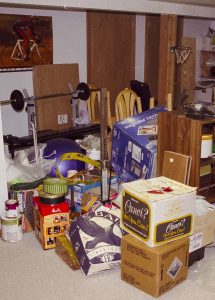
Fifteen years ago, three years after moving into that first house, I initially began my decluttering journey. Dr. Math and I now lived together, in a 1640 square foot, three-bedroom home in the suburbs (with a finished basement adding more square footage,) and we were still running out of space. Two people and one cat should not require a house of that size, but there we were. My stuff, for it was mostly my stuff, was slowly beginning to crowd us out of our own space. The situation was nothing like the hoarders we saw on television, but it had clearly become too much. I had been reading frugality websites, and one of them led me to Cynthia Ewer’s Organized Home and the article “What’s Your Clutter Personality Type?” There it was, in bold letters: I was “The Hoarder.”
The Hoarder: “This might come in handy someday!”
Hoarding is rooted in insecurity, financial or otherwise. Deep down, Hoarders fear that they’ll never have the resources they need if they let go of any possession, no matter how worn, useless or superfluous.
In addition to my pile of junk, we also had duplicates of numerous household items. Dr. Math had moved in a year before, and I was afraid to let go of the duplicates (in case we should break up.) I had backup cassette dubs of every album I owned on CD, even though by that point I had CD players in both the house and car. There were years worth of old magazines I never re-read. A shelf held every participation trophy I’d received from years of team sports. In my filing cabinets, I found things like cash receipts for nearly every purchase I’d made in my adult life, dating back twelve years and phone bills from my dorm room (nine years after I’d graduated,) along with every single financial and utility statement I’d received in that time. Like the shelves, the file cabinet was overflowing.
I thought I was going to need a full-sized filing cabinet. Instead, I bought a shredder.
That was the easy stuff, because most of it was clearly trash at that point, even to me, although it took a bit of soul-searching to come to that conclusion. It was a good start, but once the trash was gone, I kept accumulating everything else.
In their classic personal finance book Your Money or Your Life, Vicki Robin and Joe Dominguez refer to “gazingus pins.” Gazingus pins are those items we routinely purchase on impulse. Stuffed animals were my gazingus pins. I couldn’t resist a cute stuffed animal, particularly if the price was right, and I purchased several a year. Other than the stuffed animals, most of my purchases were gear of one variety or another. I wanted to do everything, and I needed the tools of the trade for each activity. While some activities, like cycling, photography, cooking and writing, were long term interests, over time the list grew to monumental proportions. And the gear associated with it continued to accumulate.
I’d made some good progress the previous year, but by 2003, I was completely overwhelmed again. The perfectionism had taken over. I wanted to do it all, and I wanted to do it all perfectly, which meant with all the right stuff. In a breakthrough session with my therapist, she said to me, “You absolutely must simplify.” I needed to do less, and I needed to own less.
In the following days and weeks, I created several charts to help me with the process. One of those charts listed every single activity in which I had a passing interest. It had a column for the level of effort I was investing in that activity, its benefits, its disadvantages, the gear required, my plan of action going forward, and an empty column to record the actions taken. This table, in a very small font, ran to fifteen pages long. Fifteen pages of things I was trying to cram into my life, on top of a job, relationships, and basic needs. I listed no less than twenty different sports, and probably twice that many other hobbies. A second chart detailed thirty projects on my to-do list.
I was shocked by the sheer extent of my clutter. Seeing it all listed in excruciating detail allowed me to say goodbye to a lot of the activities and associated gear. I donated most of the stuffed animals. Unused sports gear and hobby supplies went out the door, as did my dreams of doing those activities. I felt lighter and started writing more again.
Starting Over
Two years later, in 2005, Dr. Math landed a job here in the little city. We had long since decided that when she finished, we would move to wherever she found a position. I was looking for a career change at that point, so the time was right. In addition to having decluttered and simplified our lives significantly, we would be taking a significant cut in our household income, so we were looking to downsize and found a little bungalow that fit our needs and budget. We donated everything that wouldn’t fit in the new house and began our new lives.
I would love to say that we lived minimalist-ly ever after. But if that were the case, I wouldn’t be writing this blog. Twelve years later, I’m once again feeling overwhelmed by clutter.
We do have less than we used to have. Every year, we donate boxes and boxes of stuff to our church book and rummage sales. Things continue to enter our lives, of course. As our lives and interests change, we acquire new things to support those new interests. Sometimes we are less diligent in getting rid of what we no longer need. Sometimes we acquire things that don’t work out. Mostly, we find that our needs have changed. And for the most part, we find that we need less. Getting from needing less to having less is the challenge.
It’s a long process. I envy those who can declutter in a year or two and maintain, but as long as I keep making progress, I’ll call it a win.
Epilogue
And those videotapes?
I was already overwhelmed with the collection by the time I moved out of the apartment. In the new house, the tapes were relegated to the floor of an otherwise empty room in the basement. Less than a year later, the sump pump backed up and flooded the basement. Insurance reimbursed me the cost of the tapes and I bought a DVD player. It still took me another three years to throw out the tapes, but eventually they went into the trash. It was a huge relief.
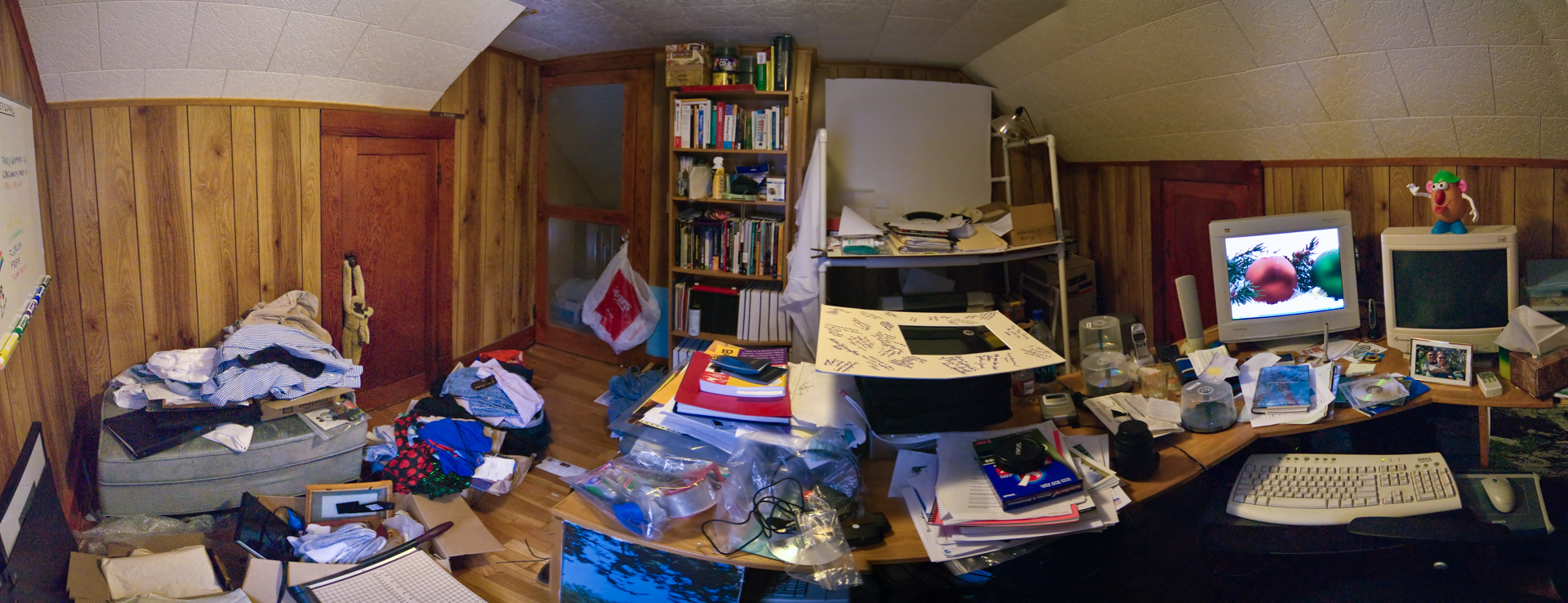
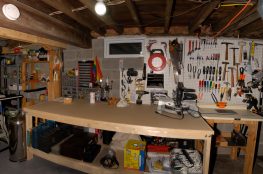
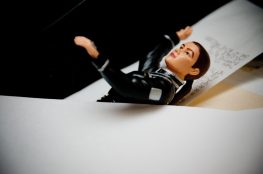
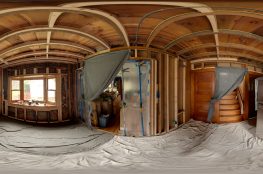
May 25, 2018
Wow! What a journey! You should be proud of the progress you’ve made. Thank you for sharing your story. 🙂